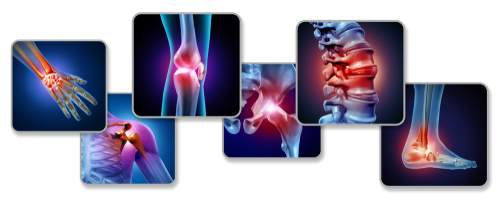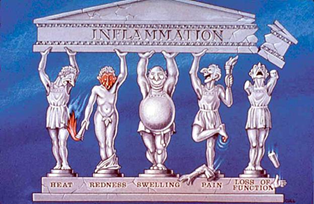What is Arthritis?
‘Arthritis' is a general term meaning inflammation of a joint. Broadly speaking there are two types of arthritis:
- The commonest type is ‘wear-and-tear’ – usually age-related - osteoarthritis
- Then there are a large number of true ‘inflammatory’ arthritis diseases, of which Rheumatoid Arthritis (RA) is the most well-known, but about as common is Psoriatic Arthritis (PsA - inflammation in the joints in up to 25% of patients with psoriasis); there is also Reactive Arthritis (ReA - which can come on after certain infections) and Colitis-related arthritis (seen in patients with Crohn’s Disease and Ulcerative colitis). Ankylosing Spondylitis or Spondyloarthropathy (AS/SpA) is an inflammatory arthritis of the spine (which can also be seen in cases of PsA, ReA and Colitis-related Arthritis). There are also a large number of other and rare diseases which may have joint inflammation as part of their symptoms.
Inflammation
‘Inflammation’ is a process in the body usually used to fight infection (think of a facial spot) made up of several features which may be all, or partly, present - heat, redness, swelling, pain and loss of function (stiffness).
Many patients are also concerned that they may have “rheumatism” – this is a very old, outdated term, referring to general aches and pains, not necessarily due to arthritis.

